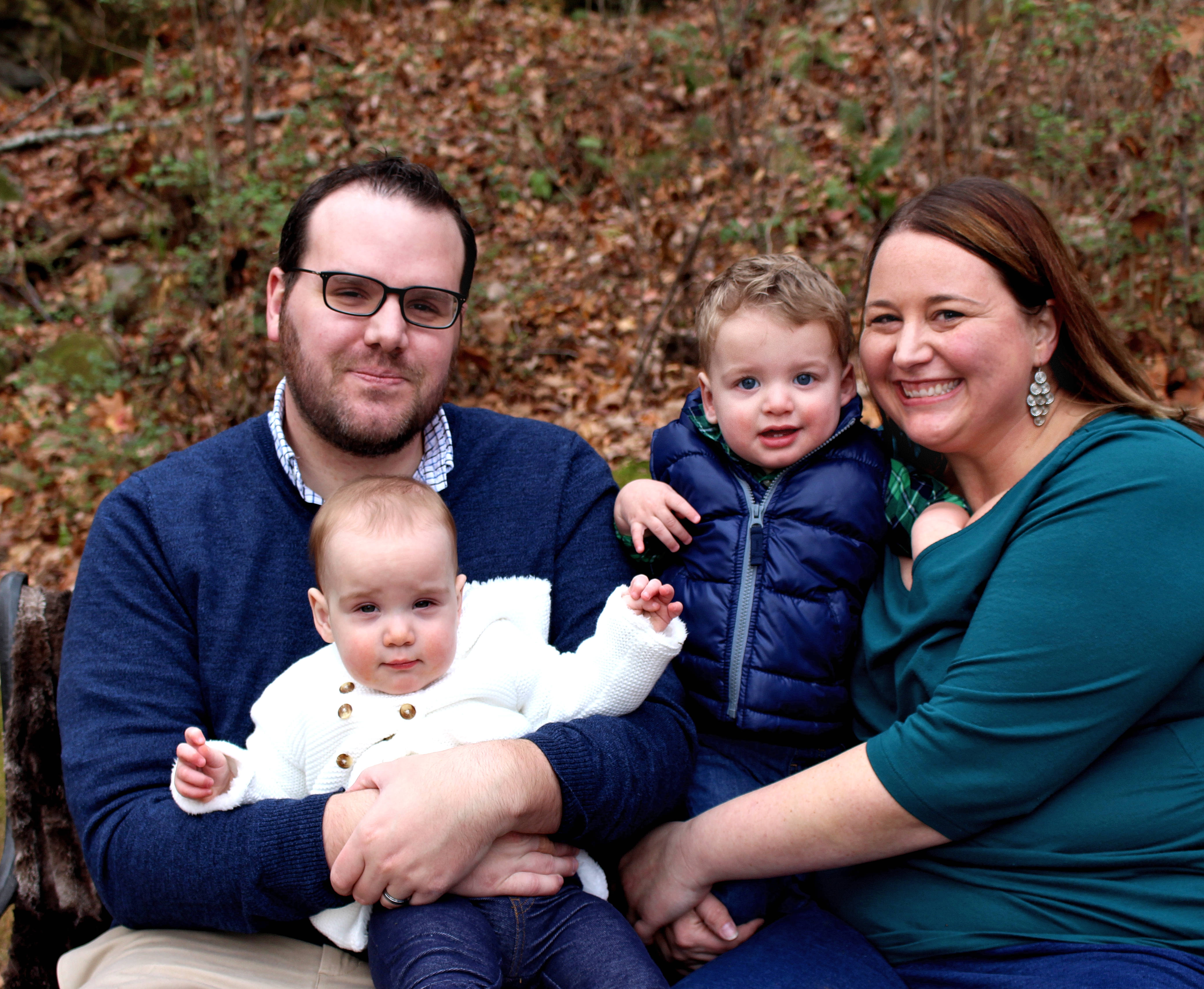TRM mom Alicia writes about overcoming a genetic defect that prevented pregnancy

Infertility is one of those problems that you may never notice you struggle with until the struggle seems all too real and hopeless. As a woman who waited until after 30 to get married, I decided after just six months of “trying” unsuccessfully to make an appointment with an infertility specialist to see if there were any underlying problems. I knew the magic age of 35 would put me at “advanced maternal age,” and it was just around the corner.
As Chattanooga residents, my husband and I were willing to travel as far as we needed to in order to find the best specialists in this part of the country. We knew we were just a few hours from large cities and assumed there would be better services available outside of the area. But every website, practitioner statistic, former patient, and doctor we spoke to kept saying the same thing: Go see TRM.
Who knew that one of the most amazing practices in the United States was just down the road?
We knew Dr. Rink Murray had helped several friends who had struggled to have wonderful success and beautiful children. And everyone who worked with Dr. Jessica Scotchie had nothing but great things to say about her as well.
One solved mystery leads to hope, crushed by a miscarriage
From that first meeting with Dr. Murray, I knew we were in the right place. He took hours to talk with us and to discuss his personal story with infertility, go over details of the practice with me, and explain the processes and available techniques at TRM.
Fast forward a few weeks and I found out there was a reason I had always had light menstrual cycles and had never had a “pregnancy scare” in my youth. We discovered that my body didn’t ovulate (anovulation).
So the chances of me getting pregnant without some sort of intervention would be very low. I was so thankful to know that and that we had decided to seek help early in the process of starting a family.
Initially, Dr. Murray put me on a hormone medication called Clomid to help me ovulate normally. After just a short time, we achieved our first pregnancy. Unfortunately, just after seeing the baby’s heartbeat and feeling we were in the clear, we lost her at around 13 weeks. We were so devastated and it took months to recover emotionally.
While going through that loss, we found that many of our closest friends had gone through similar losses, but because of how our culture avoids these “taboo” issues, they had never spoken of them with anyone. Being open from the beginning about our journey gave us the opportunity to share our grief and lean on these friends during the darkest times.
Mother’s genetic testing puts her on track for success
After this loss, we were close to losing all hope, but Dr. Murray, Dr. Scotchie and their team were there for us and made sure that didn’t happen. My husband and I decided to have genetic testing done on ourselves to see if there were any issues that might have contributed to the miscarriage.
We found out that I was homozygous for MTHFR (methylene tetrahydrofolate reductase), a disease that makes it difficult for the body to process synthetic folic acid. Through research and our discussions with Dr. Murray, we came to learn that MTHFR is suspected of contributing to multiple miscarriages and could potentially lead to other issues for me down the road such as heart disease, etc., due to a life-long lack of that essential “B” vitamin.
I began taking a form of folate that my body could process and tweaked my diet to make sure I incorporated fewer items fortified with folic acid and ate more folate-rich whole foods. I began to feel better physically and we decided to move forward with our infertility treatment.
Due to the genetic issue and my fear that I couldn’t handle another loss, we decided we wanted to forego the less expensive treatment options and instead decided to go for IVF (in vitro fertilization) with ICSI (intracytoplasmic sperm injection) and genetic testing of our embryos.
ICSI ups the odds of fertilization by putting a sperm inside the egg so it doesn’t have to break through. See how it works
At retrieval, we got 13 beautiful little eggs. After ICSI and allowing them to grow for a few days, the TRM geneticist performed the amazing feat of removing a single cell from each of these surviving embryos to send off for genetic testing.
Every penny, every hope on one chance

We were nervous when a few days later we learned that only 2 of the 13 were genetically normal. A short time later, after many anxious prayers, we had these two little frozen embryos transferred and hoped for the best. We had spent every penny we had on this one chance, hoping for a miracle. Much to our surprise, we ended up with two beautiful little miracles named Nora and Oliver!
We know many friends who went through multiple cycles of IUI (intrauterine insemination), IVF, etc. and have eventually had success. Unfortunately, many of them also suffered multiple miscarriages along the way.
To us, although it was more costly, we highly recommend genetic testing for both the parents and your embryos because of the increased success margin of transferring only genetically healthy embryos. It isn’t a guarantee of success, but it does raise your odds significantly.
I can’t imagine how many more losses we would have suffered without knowing that only 2 of 13 embryos were healthy. The 11 others each had genetic issues that would have not allowed them to survive to full term in utero.
Now two little perfect “embryos” are running around the house
Knowing how tough that first loss was on me and there was only a 15 percent chance of success each time, I am certain we would have given up long before we experienced a successful, healthy pregnancy through multiple single-embryo transfer cycles. I also would have never found out about my own health issue and been able to potentially reverse the serious consequences of a life-long vitamin deficiency. I will never regret the decision to spend extra on the genetic testing and I will never regret going with TRM.
We were completely satisfied with our TRM experience from beginning to end. Candy, our nurse, was amazing to work with and really kept me sane during the early days all the way up until pregnancy tests after our transfer. Being able to text her with questions really made a huge difference to me. (I even send her photos of the twins now!)
The embryologist, Shan, was wonderful and great with communicating with us during some of the most stressful portions of the IVF & genetic testing process. And we really appreciated her commitment to our little embryos. All of my other friends who used TRM have similarly wonderful things to say about the entire practice.
Only 2 of our 13 embryos were “genetically normal.” Now we watch those two little perfect “embryos” run around the house chasing each other and know we made the right choice using TRM and genetic testing.
